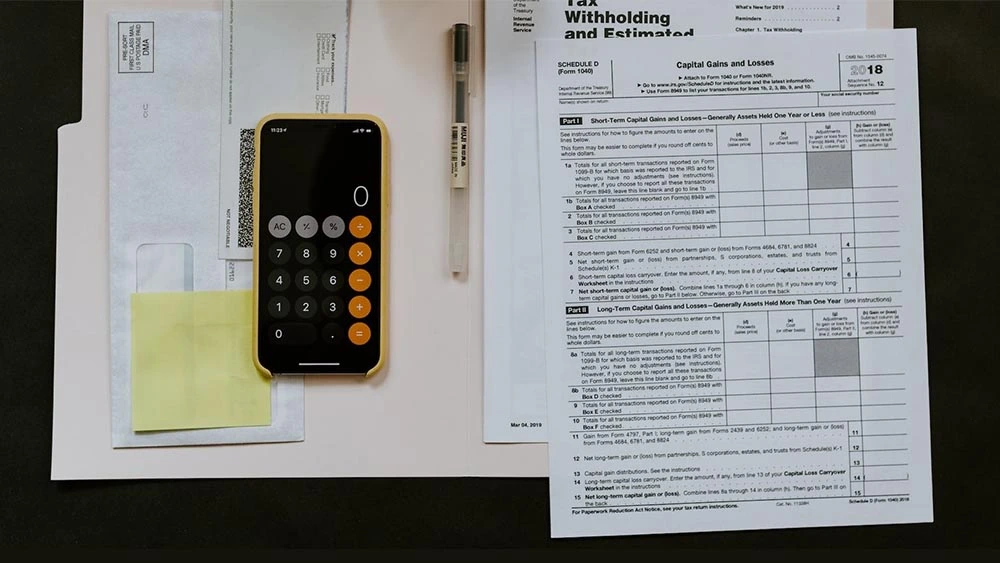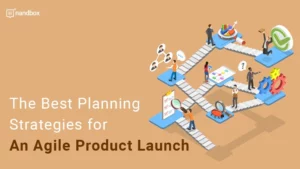To keep being a successful entrepreneur, you need to know how your app startup can make it in a market where there are a lot of other apps. Because it’s no secret that app startup success can be elusive and fleeting, with more than 90% of startups failing.
You can build your app using cutting-edge technology to provide excellent features and achieve some success. However, the app may fall as quickly as it rose; maintaining success will necessitate avoiding numerous pitfalls.

“By the middle of 2022, there were more than 2 million apps in the App Store, with Google Play boasting more than 3 million apps.” While many of these are gaming apps, there are many popular and successful apps in every app store category. Meaning there is still plenty of opportunity for you to develop your own mobile app.”
The following are some of the most common traps that cause mobile app startups to fail after achieving success, and how to avoid all of them. Are you a startup founder looking to commercialize your early-stage mobile app?
Continue reading to learn more about these common app startup pitfalls and how to avoid them.
7 Common Reasons Why Apps Fail at the Very Beginning
Unclear Target Audience
When developing and managing a mobile app, you must first consider the audience for whom you are developing the app. You must conduct research to determine what type of design and features they prefer.
Knowing your target audience is monumental.

Not everyone is a customer of yours. Your target audience is the most important piece of the puzzle that determines your mobile app’s success. You can’t afford to focus on the wrong demographic.
You must categorize your potential customers based on their age, device type, occupation, and location. Then, survey each category to learn what these customers are anticipating. Customer feedback is extremely valuable and should never be discounted.
You must have a clear understanding of your target audience’s behavior. This is to ensure that you understand what your audience desires. If you don’t understand their fundamental motivation, you won’t know what to advertise about your app.
You will realize that your app startup’s development should be customer-focused, and incorporating that concept throughout your startup journey can be a game changer for you and your app startup.
Focusing On Features, Not Capabilities
The majority of app startups’ founders do not focus on their business requirements, with total disregard for what their app needs to have to fit the technical requirements to have a real chance in the app stores and to be able to compete with established, well-known apps.

You must ensure that your app works well on any device that is compatible with the platform for which it was designed. The optimization of your product is critical to the success of your app.
The Common Four Technical Mistakes
1. Assuming Initial Capacity Without Planning
What is the number of users you aim to gain with your app in a year? Whatever the number is, you should have the ability to serve them all without any capacity problems. Planning is the process of figuring out how many servers your application needs.
This is among the most important considerations you need to focus on before you start developing your app and even before you publish it for the first time. And if you didn’t, you should plan your capacity now to prevent your app’s startup from becoming a disaster.
Usually, you should do this early on in your project so that you can make a budget for the hardware and software your system will need. At the very least, capacity planning means figuring out how many CPUs, cores, and bits of memory each machine needs.
Let’s say you want to make a messenger app, and after looking at some of the most popular ones, you decide that WhatsApp is your main competitor. Let’s see how many users use WhatsApp.

You can now ask Google for all of WhatsApp’s statistics or visit one of many analytics websites.

Now, you should identify the different message types, such as text, images, voice notes, videos, etc.

Through these three points, you are able to know: What WhatsApp’s servers are capable of handling per day, per hour, and per second. And if you know these numbers, you should be able to figure out how big your app needs to be at first to compete with WhatsApp in the market you want to reach.
Estimate your Initial Capacity
From this example, you can use these steps to set an accurate estimation for your initial capacity.
1. Search for all competitors in your main industry.
2. Collect statistics about their users and their capacities.
3. Identify the nature and traffic of the usage.
4. Calculate the average usage per user and the transaction weights.
5. Add a safety margin to the numbers.
6. Create your estimations for initial capacity according to your business goals and budget.
2. Not Caring About Availability and Scalability
Your app’s launch won’t have to deal with technical problems if you’re ready for a lot of users. This readiness will make your app startup enjoy high availability while you are scaling up. High availability means avoiding any single point of failure in all system components. It’s not easy to do this when there are many moving parts, different transaction weights, and critical system problems that can happen but can’t be controlled or predicted.
This helps you keep your business open and grow with a stable presence and a positive impact.
3. Not Empowering Security Measures
How many times have you heard about cyberattacks on app services? How many times have you seen data leaks from app launches? The number is countless, and it’s not only related to new app startups but also to well-known ones.
According to CyberNews magazine, 500 million user records were leaked from WhatsApp last November 16, and these records are now for sale online!
Here are four ways that will increase your security levels:
A) Hardening For Server
One of the most important tasks to perform on server farms is server hardening. It is the process of making a server much more secure by using a variety of methods to improve security.
Most operating systems’ default configurations are not designed with security in mind. Default server configurations target usability, functionality, and communication.
B) Doing Regular Penetration Testing
which is an experimental attack on a database server to investigate its safety. Ethical hackers [penetration testers] utilize the same techniques and tools as attackers to identify system flaws.
This helps in avoiding losing the app entirely or leaking users’ data.
C) Setting Rate Limits
Rate limits help you stop cyberattacks like DDoS attacks from abusing your app’s server by giving the server a lot of requests for services.
These requests use up the server’s storage and processing power. Rate-limiting makes you overcome these attacks by limiting how many times they can do the same thing in a certain amount of time.
D) Having an SSL Certificate
SSL certificates are needed for online platforms so that user information is safe, the site is the only one of its kind, attackers can’t make fake versions, and users can trust the platform.
4. Not Having a Disaster Recovery Site.
Imagine that your servers have gone offline without a single alarm. What will happen then? Your app’s startup will crash without a doubt. But if you have a recovery site (a mirror site) where your app saves an updated live copy of all of your app’s databases and all the included transactions, because you may rely on this recovery site for extended periods of time, it should be highly available.
If proper testing isn’t done while making an app, you’ll never know how well it works. Many startups skip or minimize testing in order to save money. As a result, your app’s compatibility is unknown, and performance may suffer.
Ineffective Design
One of the most repetitive causes behind the failure of the majority of app startups is poor design. Your application will most likely fail if its design is not visually appealing or user-friendly. Make sure to design your app with your users in mind. Users dislike having to learn complicated apps.
Poorly designed user interfaces (UI) and user experiences (UX) can lead to poor customer experiences. A poorly designed interface can make users frustrated and annoyed.
The presentation is important. Even if your app works perfectly, no one will use it if the design isn’t appealing. Users may not understand how to use the app, or they may have difficulty finding what they need.
The Common Four Design Mistakes:
1. The User Interface is Too Busy
One of the main rules of good UX is that it should be easy to use. If your app’s interface is too complicated, users will get lost and leave. Adding too many features makes things hard to understand.
Many people think (incorrectly!) that users want all-in-one apps that let them do everything. But having too many choices can make it hard to choose. Interfaces that have too much going on are easy to fix, though; just cut them down.
Of course, that’s never easy. What if there are too many features in your app and you can’t get rid of any of them? A good way to do this is to personalize the app so that only relevant features are shown to the user, reducing the number of options.
2. Ignoring How the App Is Built
When doing UX design, it’s easy to get caught up in how things look. Even though they are important, many people don’t pay attention to how the app works and how the logic flows.
The comparison is to a house that looks nice on the outside but has weak foundations. It will fall apart in the end.
For the UX to work, navigation needs to be simple and always remain simple. It makes sure that the flow of the app is as smooth as possible. In other words, users shouldn’t feel like they can’t find their way around your app. You can stop this from happening by giving them visual clues about where they are in your interface.
3. Stopping App Tests
When apps are used in the real world, even the best ones may have bugs or flaws that were not planned for. Even if you met all of the user needs during the development phase, does your app actually do what it’s supposed to? Can users get where they want to go without getting confused?
Testing your app with real users can help you understand how users feel about it and make sure it looks great and works well. Ask real people to use your app to do specific tasks. If they can’t finish the tasks, you should make changes.
You should keep measuring your app’s performance even after it’s been released so that your mobile UX can change to better meet your customers’ needs.
4. Using Technical Terminology
You should use the same words that your users do. Strange words and phrases make it hard for people to understand. Calls to action that use brand-specific jargon won’t get anyone to act; they’ll just confuse people.
In general, clear communication comes from simple, direct speech, so use words and phrases that are easy to understand to make the conversation feel more comfortable. Avoid using acronyms, brand-specific terms, cultural clichés, and technical terms that people might not understand.
As an example of a well-designed app, the nandbox messenger app is designed to be simple to use, even for people who are using it for the first time.
nandbox Messenger is built and generated by the nandbox native app builder.
People prefer simple and appealing apps where they can intuitively click one button after another.
Unbalanced Growth
If your app grows too quickly, it could start to fall apart. If you grow too slowly, your competitors could find your strengths and kill your chances. The majority of app startups move into this phase with vague growth plans.
So, you should plan and carry out the growth of your app carefully. Here’s how to make sure your app startup doesn’t just grow but grows in a way that doesn’t hurt the whole business.
The Common Four Growth Mistakes:
1. Not Setting Measurable Goals
Growth can be measured in many ways. Having clear goals will help you focus your efforts on the things that are important to you. If you don’t have clear goals, you might grow in some areas, like the number of customers you have, but not in the areas that matter to you.
Once you’ve set one or more goals, make a plan for when you want to reach them. Use milestones to see if you’re on the right track.
Consider what it will take to accomplish your objectives as well. And how much time, effort, and resources you’ll need to travel your desired route. A rough estimate of how long it will take to hire staff, secure financing, or take any other action that will help your app startup expand.
2. Losing Focus
The reality is that you can’t focus on every aspect of your app’s startup at once. If you can’t decide how to use your time, even if you can see needs everywhere, you won’t be able to change anything.
Consider the goals you have in mind. This could be the quarter to improve how your sales team operates if you gauge your growth by how much money you make. Your customer service team might require a little more training if you place the greatest importance on customer lifetime value.
3. Neglecting Customers
A startup app business cannot expand without paying users. No matter how many alliances you form or products you produce, if you don’t have a large customer base, you won’t succeed.
Attend to what your customers have to say. Their suggestions can assist you in improving your product, identifying issues with customer service, and even locating new types of customers. And you’ll gain their loyalty if you follow their advice.
Everyone who owns a business wants it to expand, but few have the patience to do so in a positive way. In business, the slow and steady approach typically prevails.
4. Lack of Flexibility
When the number of clients increases, your team may become overworked. Your efforts to retain customers who don’t generate a lot of revenue can help. To handle increased web traffic, more servers are required. Larger orders may be challenging for smaller suppliers to fulfill.
There are numerous varieties of infrastructure, and any one of them could fail. Pay attention to what your employees have to say before a disaster arises due to flaws in a process or system. Embrace emerging technologies that can benefit your team while keeping an eye on your goals and budget.
Poor Budgetary Roadmap
Many app startups fail due to bankruptcy. You should concentrate your efforts on two areas: the money you invest and the money you earn. Throughout the development and early stages, you must carefully plan your budget.
As the founder of a new mobile app company, you might not be interested in finance. However, you must invest time in creating an appropriate budgetary roadmap if you want to succeed.
Planning and wisely allocating time and money are essential. You don’t want the startup idea to run out of runway before it has a chance to take off.
The Standard Four Budgetary Errors:
Taking Digits as Given
The issue would be that you don’t always conduct the thorough analysis required to generate the right numbers. Additionally, it’s more likely that you will underestimate rather than overestimate most of the time.
The following expenses should be included in your budget: customer acquisition, backup, marketing, human resources, app maintenance, and taxes. To find out how much each item costs, you can request updated prices. It’s essential to track your business expenses and know how much you need to set aside for taxes to prevent any financial issues down the line. Using a tax calculator can help you make accurate calculations and avoid underpaying or overpaying your taxes.
2. Poor Operation Cash Flow Management
Cash flow issues arise when a startup consistently spends more money than it brings in. For new or small app startups in particular, cash flow management is the process of monitoring, evaluating, and maximizing the use of the total amount of cash.
Cash management is therefore essential to any company’s success because it:
A) Keep the Business Alive
The longer you go without a positive return, the more difficult it will be to stay in business over time. So, avoiding extended cash shortages is critical for a small business.
B) Gain Market Confidence
In the business world, nothing stays hidden forever and if your app startup has a solid reputation as a business with healthy cash flows, additional investors will be drawn to join you in your investment.
C) Funding Utilization
A business should constantly check to make sure there is enough cash on hand and that funds are not being misused. A balance must be struck between profitability and liquidity.
For example, modern financial tools can be a great way to track income, expenses, profits, and losses, as well as allow owners to create budgets and set financial goals to meet financial needs.
Finally, using effective cash management techniques makes it possible to predict how much cash will be available to meet financial needs.
According to your business plan, you must judiciously invest in well-designed solutions.
3. Improper Financial Planning
Many app startups think they will be able to raise money over time, so they keep investing even though they don’t have enough money. This leads to a lack of money, which stops all operations and, in the end, leads to the shutdown.
Don’t rely on large investors to fund you because they may not do so in the long run. Instead, create a budget that will keep your app running year after year. By planning your way through an imagined variety of scenarios.
4. Poor Monetization
You must devise an appropriate strategy for this. Selecting the right pricing model, monetizing the right set of features in the app, and determining the right time to monetize are all difficult decisions to make. Doing research and analysis on your competitors, customers, and past trends is a good idea.
A) In-app purchases
With this model, users pay for some advanced app features, such as access to specific content, getting rid of an app’s ads, buying sticker packs, or buying games.
B) Pay per download
You can use this method if you’re sure your app is unique and helpful, and you’ve tested the idea that people will buy it. Most of the time, users only buy apps that are very specific and work well.
C) Displaying Ads
Adding advertising banners to your app will allow you to generate revenue from your users without asking them for money, but rather by displaying advertisements to them. You can join networks like Google AdMob or rent ad spaces for companies directly.
Incorrect Marketing Strategy
One of the main reasons mobile app startups fail is that they take the wrong approach to marketing. Investors spend millions of dollars trying to build a single good application, but if you create the wrong marketing strategy, this can result in your app’s demise.
It’s not enough to make a perfect app; you also have to make sure it gets to the right people. If you read about famous mobile app startups, you’ll see how smartly they marketed their products, which helped them stand out in a sea of mobile app startups.
The Common Four Marketing Mistakes:
1. Wrong KPIs
Tracking and improving the right metrics is what makes your app’s startup successful. Important major indicators are lifetime value, user satisfaction rate, monthly recurring revenue, user acquisition cost, and retention rate.
Also, you should determine in your app’s startup case which additional key performance indicators define your progress. Depending on the nature of your main industry.
App startups are linked to almost all industries in the world.
2. Unreal Positioning
Positioning your app is not something you’re trying to make; it’s how people think about it. Importantly, first impressions are important and difficult to change. You should take care that your users perceive your product in the way that you want them to.
Don’t underestimate or overestimate your brand because when users use your app, the truth will always come out. Only show what your app is capable of, and do this in the best way you can.
3. Poor Loyalty
Your strategy does not end with the acquisition of new users. Customers must stick with your app and enjoy using it all the way through. Not only that but they must be persuaded that your app is worthy of being recommended to all of their friends. It may appear to be a lot of work, but building a relationship with your customers will keep your startup from failing.
4. Not Investing Enough in Marketing
Every new app startup needs to invest time, effort, and money to market it. Having an excellent app is not the only factor in gaining publicity. You should identify the best platforms where your audiences hang out and plan to reach your targeted audiences through these platforms.
You will be able to identify the best way for your app to launch and the best marketing tactic to focus on by tracking your marketing tactics on these platforms.
There are many marketing tactics for app startups:
A) Content Marketing
A marketing scope that uses relevant articles, videos, high-quality podcasts, social media posts, and other forms of media to attract, engage and keep an audience. This method shows that you are an expert, helps people remember your brand, and keeps your business in people’s minds when they need to buy what you sell.
B) Affiliate Marketing
It’s a marketing approach that allows you to market your app through media platforms and freelance marketers. By offering a commission per sale or per lead. For each sale buyers make, they get a cut of the profit.
You only pay when you receive a positive impact, which is great from a financial perspective.
C) Influencer Marketing
This strategy uses testimonials and product mentions from people who are seen as experts in their field and have a lot of followers on social media. And by that time, you might hire a specific brand ambassador, which is a person who promotes the app’s brand in positive ways.
This helps raise brand awareness and, for sure, sales. The brand ambassador should look, act, and have the same principles and values as the business.
D) Email Marketing
A type of direct marketing in which you use email to promote the items or services of your app.
It’s a key method to inform people about your app’s launch, and it lets your audience be aware of your new features or offers.
E) Offline Marketing
Offline marketing is any kind of promotion that uses offline media. This includes things like participating in live events, TV interviews, radio talks, good billboard ads, QR code posters that you can generate using a QR code generator, etc.
Nowadays, in almost all of the world, offline marketing methods are designed to support or enhance online strategies.
Wrong Updates and Pivots
On-time updates and pivots are critical for security and performance quality, but too many updates may annoy your customers and your investors. Many app startups fail to consider the impact of updates on the user experience.
You must ensure that your updates are useful and keep you ahead of the competition. Because changing one element in the app startup landscape may increase your odds.
Make certain that the updates you provide are effective and beneficial to your users. If you do not consider your user’s point of view, you may be setting yourself up for failure.
In conclusion
You now understand the major mistakes that lead to app startup failure. A single mistake in planning, designing, audience targeting, or budgeting led to the failure of thousands of app startups that were ineffective at engaging users.
Avoid these mistakes and come up with a plan to help you stay in the app startup world and grow. While you may not be able to replicate the success of Amazon or Meta, you can still develop a solid business plan centered on a realistic value proposition that will keep your mobile app alive and well for years to come.
There are new app startups every day, and this growth in the app startup field is increasing. It’s not centered in one country, but app startups are the global trend in business.
Don’t be afraid of failure; many app startups’ success stories begin with learning from their failures. The majority of entrepreneurs gain experience and make huge successes after facing failure at some point.
Finally, and as a matter of fact, you have the option of ignoring all technical concerns and focusing solely on business objectives by utilizing nandbox, the native app builder, which allows you to scale up and maintain your app as much as you want without fear of technical or budgetary constraints.











